Shri Hari Mandir, one of Pujya Bhaishri’s most beautiful visions, is one of the grandest and most unique temples in Saurashtra, Gujarat, India. It is built according to the Nagara type of architecture, similar to the famous temples of Dwarka and Somnath. Measuring 105 feet, held up by 66 pillars, capped by beautifully carved domes, it is the hallmark of Sandipani Vidyaniketan.The deities residing within are the personification of Pujya Bhaishri’s faith and ardent devotion.
Deities and Seva
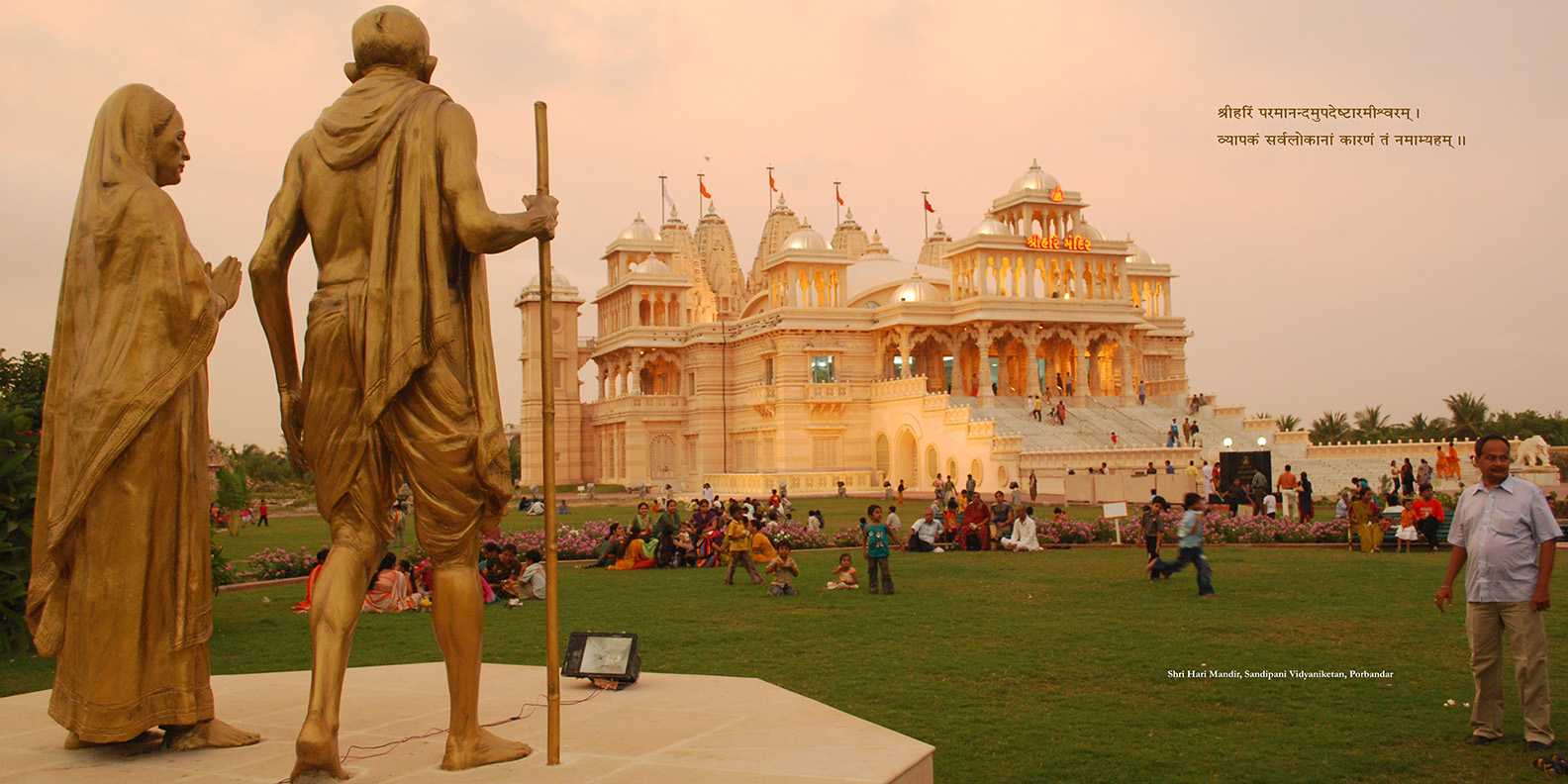
Shri Hari Mandir has 5 shikhars (spires). Shri Lakshmi Narayan are enshrined in the sanctum sanctorum. On either side of Shri Lakshmi Narayan Bhagavan are the divine forms of Shri Janki Vallabh Bhagavan and Shri Radha Krishna Bhagavan. Housed under the other 2 domes are Lord Shankar with his family and Maa Durga. At the two extreme ends of these deities, two beautiful galleries have been erected that have been consecrated with the deities of Shri Ganesha and Shri Hanuman.
The murtis (idols) of all the deities in Shri Hari Mandir were made in Jaipur by Dharmendraji Pandey of the famous ‘Pandey Moorti Museum’, established in 1961 in Jaipur. The Pandey family comprise of four brothers who have successfully created murtis for over 200 temples in India and over 60 temples abroad. The murtis arrived at Sandipani Vidyaniketan on 15 January 2006 ready for the consecration ceremony on 2 February 2006.
The murtis of all the deities that have been consecrated in Shri Hari Mandir have been sculpted to perfection and their features beautifully crafted. Their mukhārvinda (expressions of their face) invoke devotion in each individual who does their darshan. Their shringār (ornaments with which they are decorated) and poshāk (dress) are colorful and mesmerizing. Each deity is a representation of certain values and ideals. Every form is symbolic and we worship the deity, in order to be blessed with the virtues that they characterize.
Shri Lakshmi
Narayan
Shri Hari Mandir is named after the primal cause of this universe, Shri Lakshmi Narayan, who is the main deity of this temple. Lakshmiji, symbolises the prakriti (nature) and is known as ‘Shri’; whilst Narayan symbolises the Purusha (the eternal Universal Consciousness) from who nature has evolved and is known as ‘Hari’. This is why the temple is known as ‘Shri Hari Mandir’.
Shri Lakshmi Narayan reside in the centre most sanctum sanctorum of the temple.
Lord Vishnu supports, sustains and governs the Universe as well as originates and develops all elements within. His consort Lakshmi is the Goddess of wealth and the source of all powers and energies.
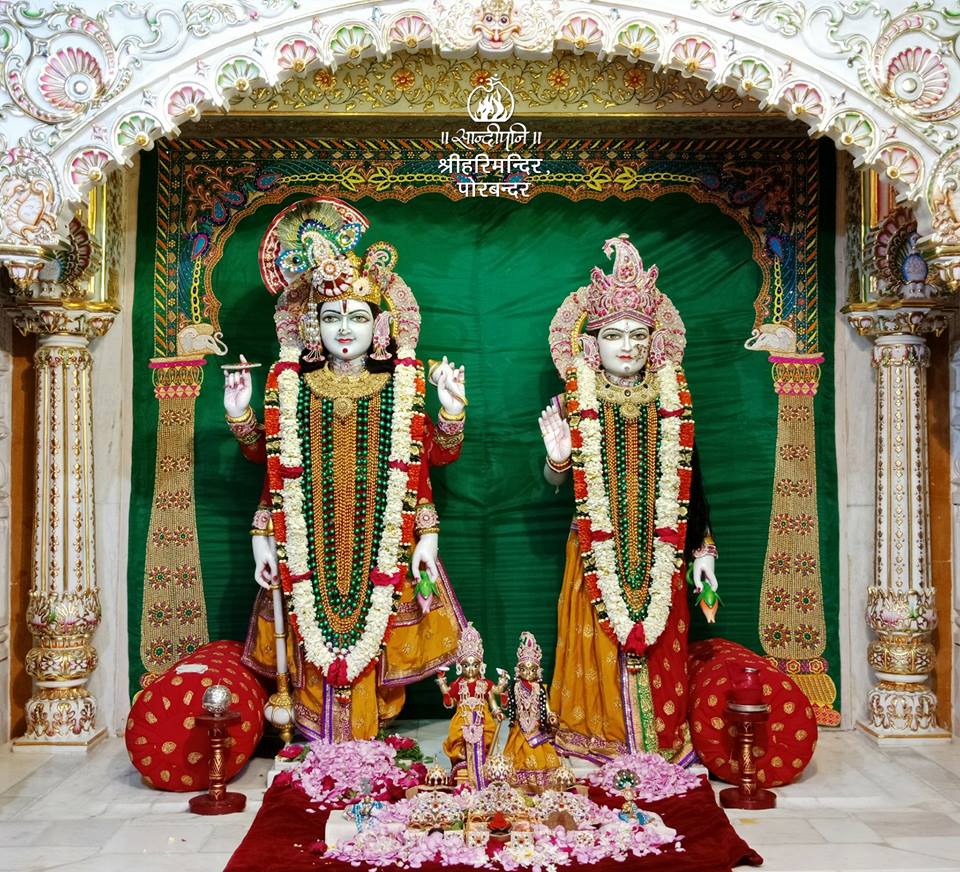
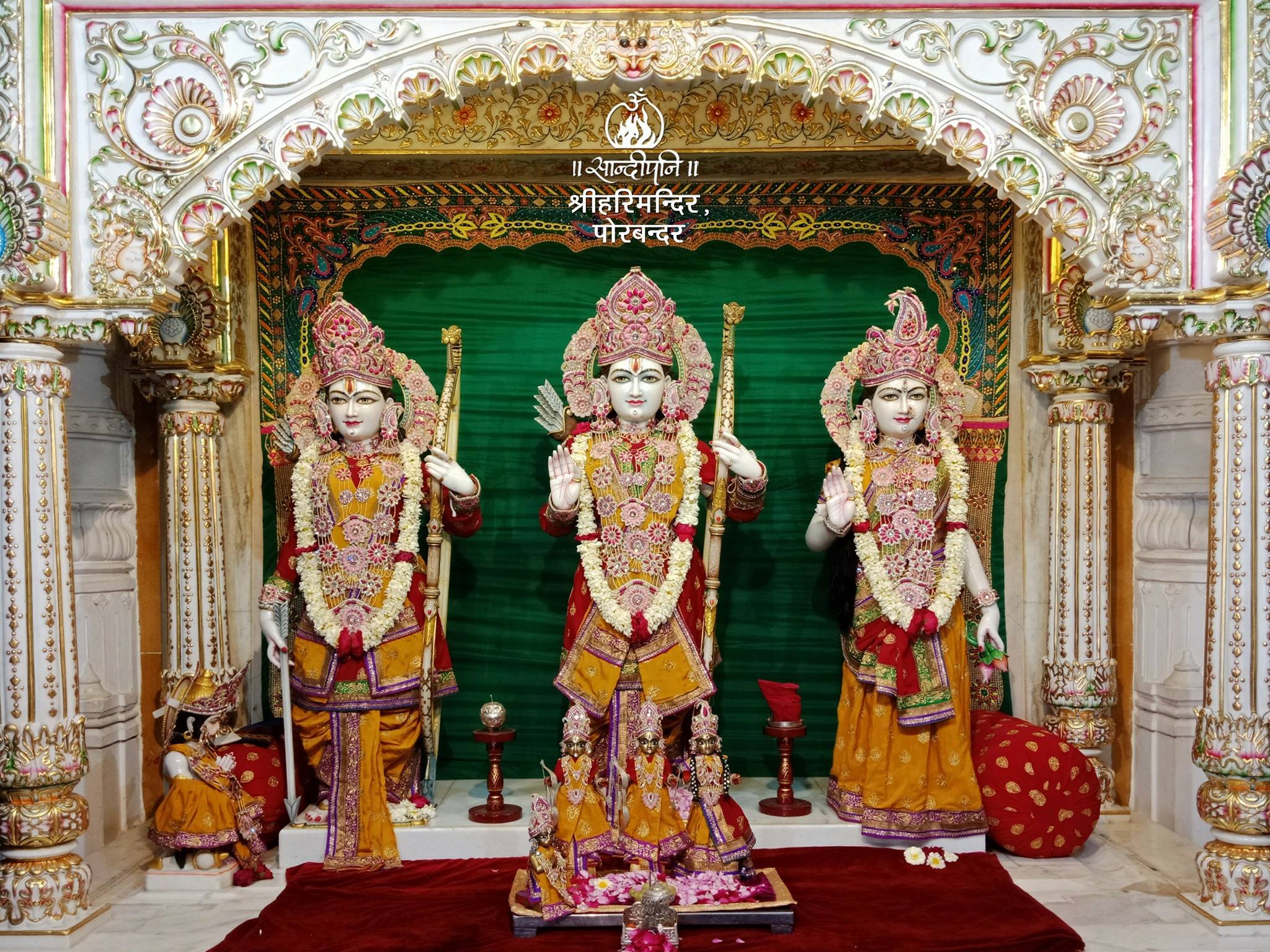
Shri Janki Vallabh Bhagavan
Shri Janki Vallabh Bhagavan reside in the sanctum sanctorum on the right of Shri Lakshmi Narayan Bhagavan.
Shri Ram is the personification of an ideal son, brother and King and an epitome of love and compassion. Shri Sitaji personifies the ideal wife and a source of complete love and compassion, Shri Lakshmanji of an ideal brother and server of Lord Ram and Shri Hanumanji of loyalty and dedication towards His Lord Shri Ramji, Shri Lakshmannji and Shri Sitaji.
Lord Vishnu descended on Earth in various incarnations to establish righteousness, destroy evil and protect humanity. In Treta yuga, He incarnated as Shri Rama, while His consort, Sitaji, emerged from the earth signifying that true wealth exists in the earth in the form of grains and minerals. Shri Sheshanāgaji took the form of Lakshmanji.
Shri Radha Krishna Bhagavan
Shri Radha Krishna are the supreme depiction of devotion and the companionship of the Lord with His ardent devotee. It not only represents the zenith of devotion and love, but also, the enjoining of the human soul with the Supreme power. They reside in the sanctum sanctorum on the left of Shri Lakshmi Narayan Bhagavan.
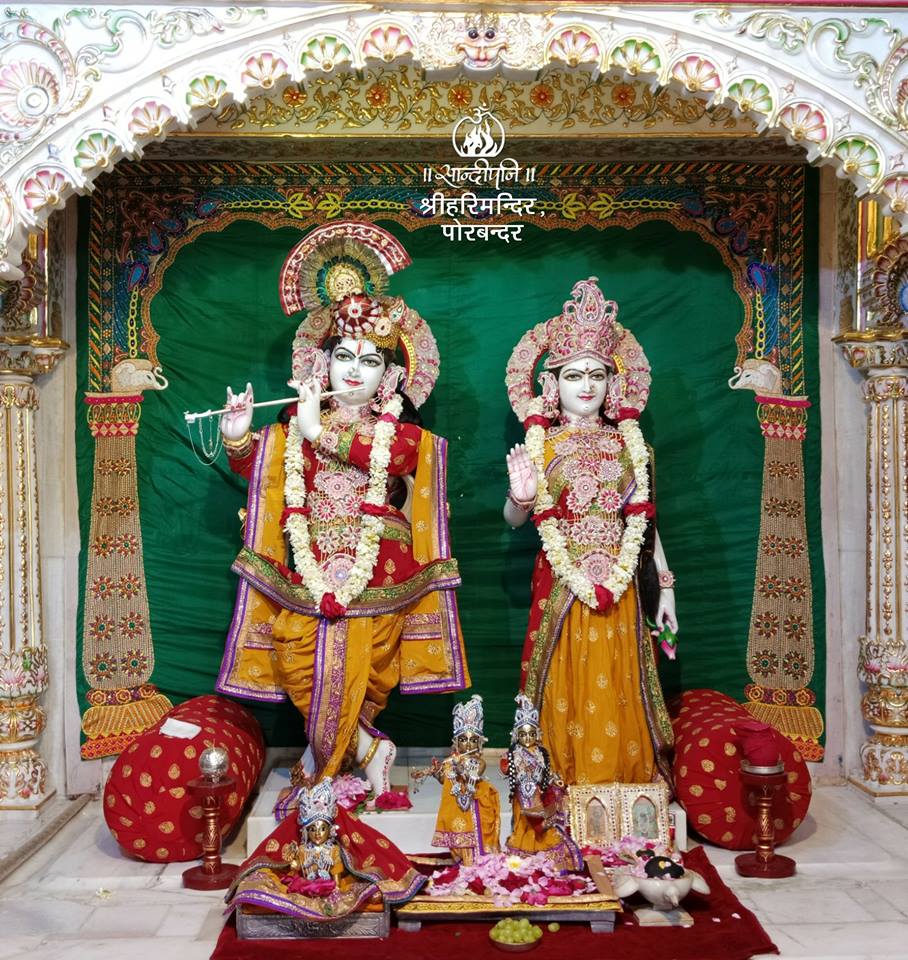
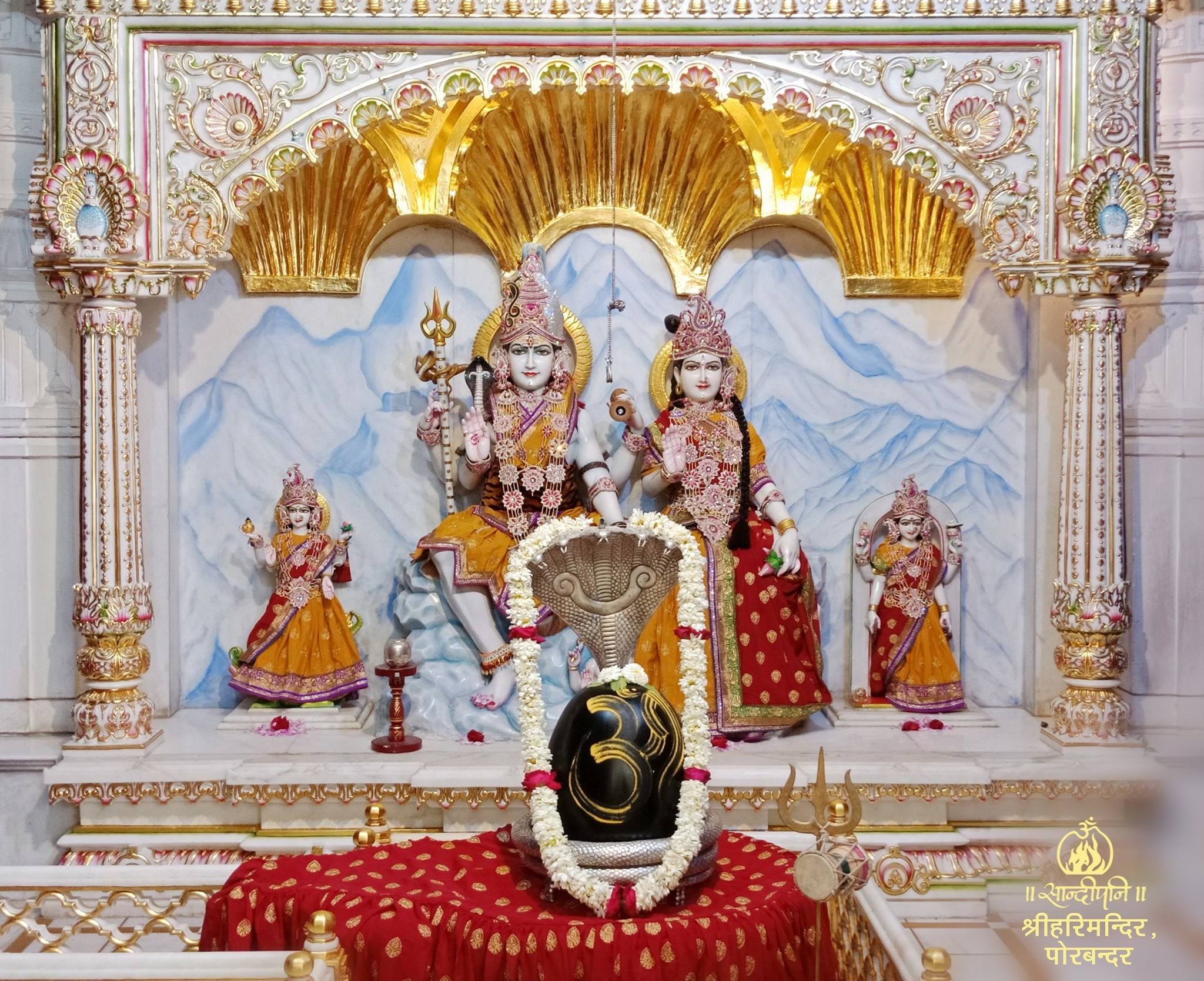
Shri Chandramauleshwar Bhagavan
Shri Chandramauleshwar is another name for Lord Shiv. The deity is paired with His Consort Goddess Parvati. On either side of them, reside, Shri Gangaji and Shri Ganeshji. They reside in the sanctum sanctorum at the extreme left of the temple.
Shiv means one who is eternally pure, or one who can never have any contamination nor imperfection of the senses. Parvati is His power of creation, the embodiment of Shakti (power). The two forms are one united entity, symbolic of the absolute state of being.
Lord Shiva is also present in the aniconic form of Shiv linga to whom all worship is offered. In front of them outside the sanctum sanctorum is Nandiji who sits looking straight at Lord Shiv and Parvati. In front of Nandi sits the tortoise. Nandi represents Dharma (righteousness) and the tortoise restraint of senses. Both are important to imbibe in our lives to experience God-realisation.
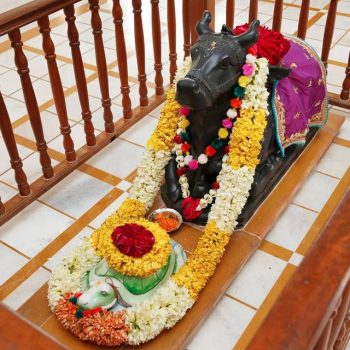
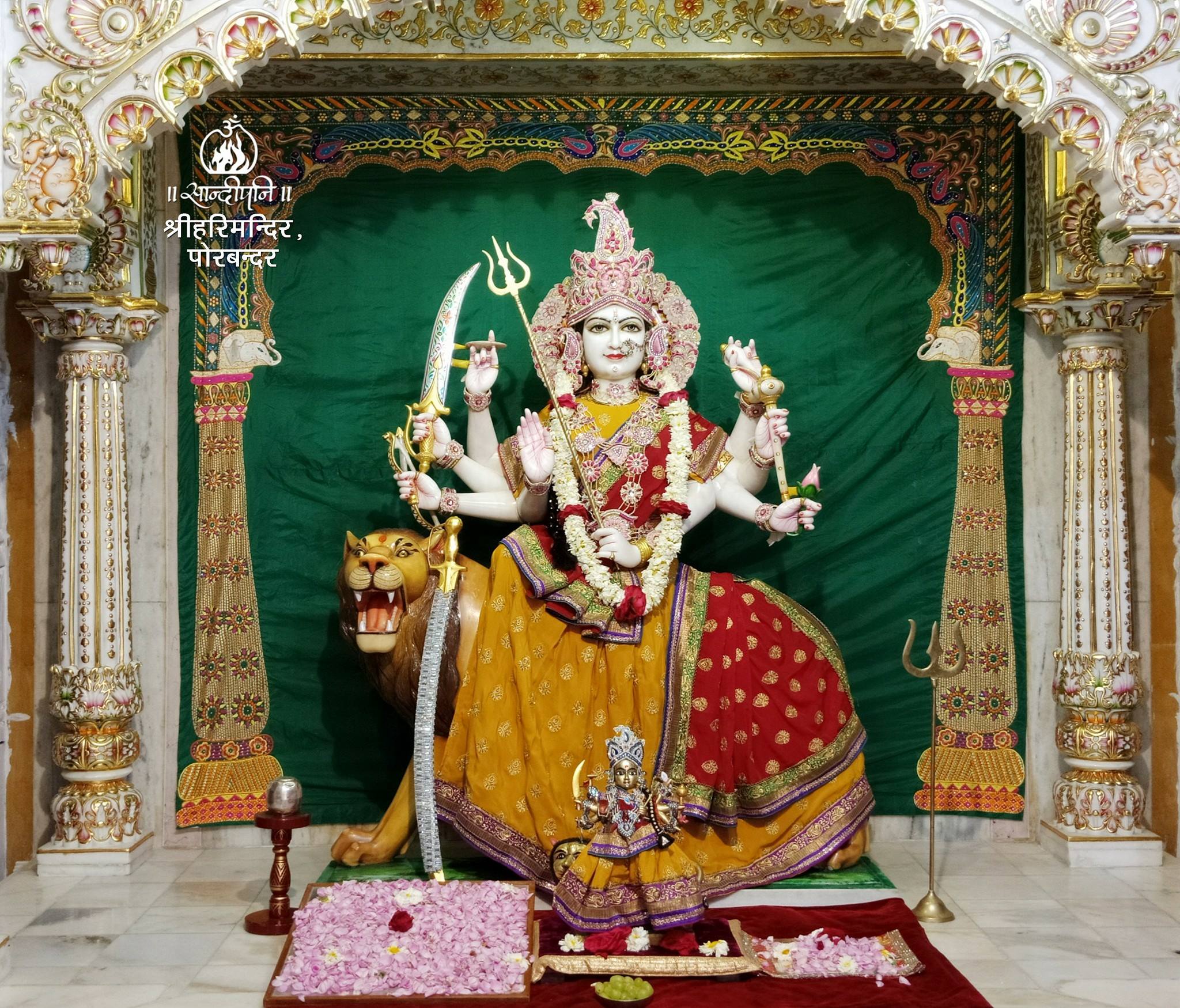
Shri Karunamayi Maa
Maa Durga who rides a lion, is the provider of life and nourishes and protects us is also present in Shri Hari Mandir.
Shri Karunamayi Maa represents the power of the Supreme Being that preserves moral order and righteousness in the creation. She resides in the sanctum sanctorum at the extreme right of the temple. Her striking form holding weapons in Her hands is symbolic of Her divine strength which destroys evil and protects mankind from pain and suffering caused by evil forces.
Shri Ganeshji
Shri Ganeshji sits in the extreme right of the temple in a gallery facing Shri Hanumanji who is on the opposite side. Shri Ganeshji is widely revered as the remover of obstacles. He is the deity of intellect and wisdom and His presence is invoked at the start of rituals and ceremonies. His form represents the wisdom that when intellect harnesses hard work, success is inevitable.
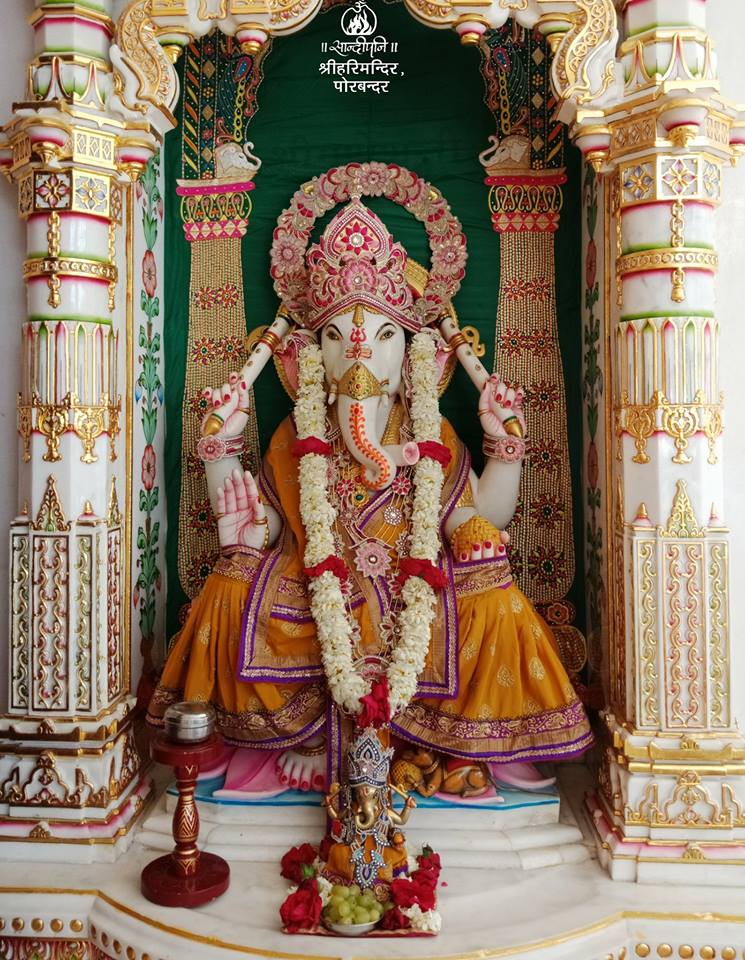
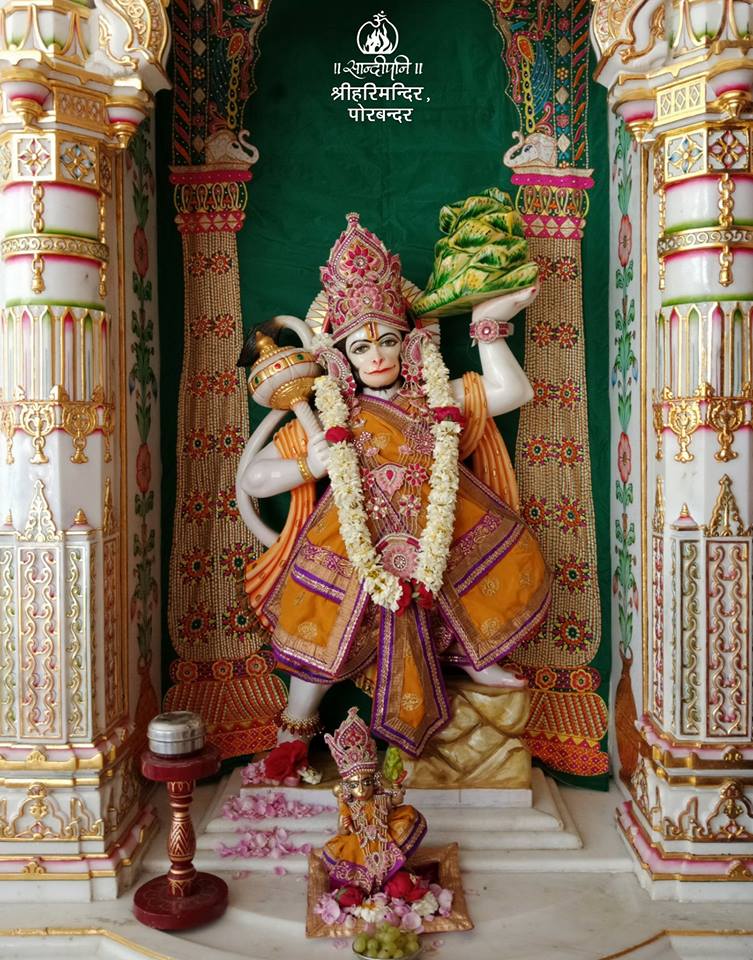
Shri Hanumanji
Lord Hanumanji stands in the extreme left of the temple in a gallery facing Shri Ganeshji. Shri Hanumanji depicts the noble values of dedication, loyalty and love towards His master, Lord Ram. He is worshipped as the epitome of devotion and the remover of troubles.
Shri Veda Bhagavan
Shri Veda Bhagavan was consecrated on 19 October 2007. In the form of a scripture, Shri Veda Bhagavan is also worshipped as it contains all the knowledge.
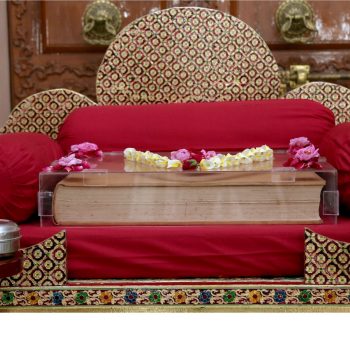
Join us for Religious Offerings at Shri Hari Mandir
Thousands of devotees offer to join us for various Seva Yagyas carried out at Shri Hari Mandir throughout the year. Below is a list of the various religious offerings you can join. For further details, please contact: +91 909 996 6260; Email: bsstpbr@sandipani.org .
All cheques and demand drafts must be under the name of ‘Shri Hari Seva Trust’.
Seva for All Seven Temples |
Amount |
|---|---|
| Seva for One day for all the deities: Pujan, abhishek, Mangalbhog, Rājbhog, Shayanbhog prasad and Pushpa (flowers) seva for all the deities |
Rs. 5,100 |
| Mangal Bhog: Morning Prasad for the deities |
Rs. 1,100 |
| Raj Bhog: Afternoon Prasad for the deities |
Rs. 2,500 |
| Shayan Bhog: Night time Prasad for the deities |
Rs. 1,500 |
| Pushpa Seva: Flowers for the deities |
Rs. 1,500 |
| Dhvajā Rohan: Worship and hoisting of the auspicious flag atop the five temples and recital of Shri Satyanarayan Katha |
Rs. 15,100 |
| Dhvajā Rohan for 10 years: Worship and hoisting of the auspicious flag and recital of Shri Satyanarayan Katha for 10 years |
Rs. 151,000 |
Seva for Shri Lakshmi Narayan Bhagavan, Shri Janki Vallabh Bhagavan and Shri Radha Krishna Bhagavan |
Amount |
|---|---|
| Shri Ram Navmi Utsav: Worship, decorations, kirtan/bhajans and prasad for the day on Ram Navmi. |
Rs. 51,000 |
| Janmashtami Utsav & Nandotsav: Worship, decorations, kirtan/bhajans and prasad for Janmashtami & Nandotsav |
Rs. 251,000 |
| Deepavali Annakut: Annakut utsav (variety of Prasad/food offerings) for all deities of Shri Hari Mandir and all devotees present during Deepavali |
Rs. 551,000 |
| Patotsav Annakut: Annakut utsav (variety of Prasad/food offerings) for all deities of Shri Hari Mandir and all devotees present during Patotsav |
Contact Us |
| Radha Ashtami Utsav: Worship, decorations, kirtan/bhajans and prasad for the day on Radha Ashtami |
Rs. 25,000 |
| Tulsi Vivah: Worship, celebrations, kirtan/bhajans and prasad for the day on Tulsi Vivah |
Rs. 151,000 |
| Shrimad Bhagavat Recitation | Rs. 15,000 |
| Shri Satya Narayan Katha | Rs. 2,100 |
Seva for Shivalay |
Amount |
|---|---|
| Rudrābhishek of Shiv Linga: Abhishek and worship of Shiva Linga with 11 Rudri Pāth |
Rs. 1,500 |
| Laghurudrābhishek: Abhishek and worship of Shiva Linga with 111 Rudri Pāth |
Rs. 11,000 |
| Mahashivratri Chaar Prahar Abhishek: Worship and abhishek of Lord Shiva |
Rs. 100,000 |
Seva for Shri Ambaji Mandir |
Amount |
|---|---|
| Chandi Pāth | Rs. 1,100 |
| Seva for One Day during Navratri | Rs. 11,000 |
| Naukavihar – Abhishek with flowers and water and boat ride for Mataji Swaroop | Rs. 25,000 |
| Navratri Annakut: Annakut utsav (variety of Prasad/food offerings) for Shri Karunamayi Maa and all devotees present |
Rs. 100,000 |
Seva for Shri Ganeshji Mandir |
Amount |
|---|---|
| Ganesh Atharvashīsh Paath & Abhishek: Recitation of the Atharvashīsh Paath |
Rs. 1,100 |
| Ganesh Utsav in Bhadarva Month: Eleven day puja of Shri Ganeshji during Bhadarva month |
Rs. 51,000 |
Seva for Shri Hanumanji Mandir |
Amount |
|---|---|
| 108 Recitations of Shri Hanuman Chalisa | Rs. 2,100 |
| Shri Hanuman Jayanti Utsav | Rs. 21,000 |